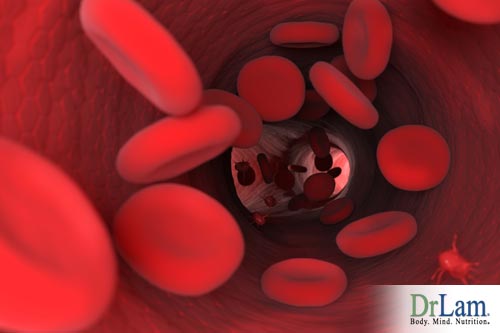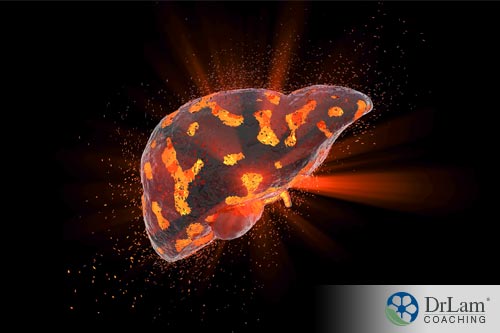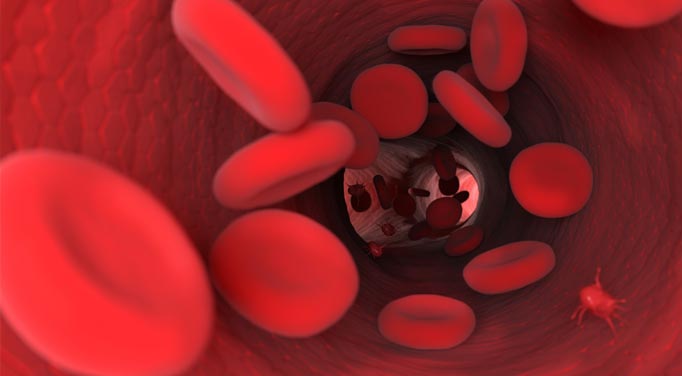 Iron is a mineral that your body needs to make hemoglobin, the protein in red blood cells that helps transport oxygen from the lungs to the rest of the body. It is essential, meaning your body can’t make it and so you need to get it from food or supplements. Most people know about iron deficiency anemia but are unaware of the hidden dangers of excess iron.
Iron is a mineral that your body needs to make hemoglobin, the protein in red blood cells that helps transport oxygen from the lungs to the rest of the body. It is essential, meaning your body can’t make it and so you need to get it from food or supplements. Most people know about iron deficiency anemia but are unaware of the hidden dangers of excess iron.
That’s because iron deficiency is the world’s top mineral deficiency. It affects more women than men because women lose blood through menstruation every month and also during childbirth.
There are two types of iron that you can get from your diet: heme iron, which is only found in animal products like red meat, and non-heme iron, which comes from both plant and animal sources. Heme iron is easier to absorb while non-heme iron needs the aid of vitamin C or other organic acids for optimal absorption.
This is an important distinction to understand when thinking about iron deficiency and excess iron issues. If you are suffering from the former, you may need to up your intake of heme iron and consider ingesting supplemental vitamin C along with non-heme iron sources. On the other hand, if you are suffering from the latter, you may want to cut back on heme iron and stop enhancing non-heme iron absorption with excessive vitamin C.
Generally speaking, if you are healthy, your body will regulate your iron absorption from the digestive tract by itself. This is done through the hormone hepcidin, which is produced and secreted by the liver. Hepcidin suppresses iron absorption when your iron store levels are high. If your iron store levels are low, less hepcidin is released.
This process is usually smooth unless you have a condition that affects hepcidin secretion. Excess iron can be caused by such a condition, such as the genetic disorder called hemochromatosis, where your body absorbs too much iron from food. It can also be that your iron absorption mechanism works fine, but you are overeating iron-rich foods, taking too many iron supplements, or overusing iron cookware.
Iron overload is a dangerous condition, and it can affect the liver, brain, blood vessels, heart, endocrine glands, and digestive tract. Iron toxicity is a huge stressor on the body, and it can even become fatal. In some cases it is acute, but generally, iron accumulates slowly over time.
This gradual build-up of iron in the system creates chronic stress, which makes the adrenal glands work overtime to secrete the body’s main anti-stress hormone, cortisol, in order to deal with this stress. At first, cortisol levels rise, marking the beginning stages of Adrenal Fatigue Syndrome (AFS). But after a while, the adrenals become so weak they can’t produce cortisol anymore, and this marks the more advanced stages of AFS.
Symptoms of AFS include fatigue, weight gain, insomnia, PMS, low libido, infertility, anxiety, mild depression, heart palpitations, brain fog, intolerance to stress, food and drug sensitivities, lowered immunity, salt and sugar cravings, hypoglycemia, hair loss, and more.
 The adrenal glands are part of the hormone circuit of the NeuroEndoMetabolic (NEM) Stress Response. They are activated through the hypothalamic-pituitary-adrenal (HPA) axis, with the hypothalamus and pituitary gland in the brain signaling to the adrenal glands to secrete cortisol when your body is exposed to stress and decreasing the release of cortisol when the stress is over.
The adrenal glands are part of the hormone circuit of the NeuroEndoMetabolic (NEM) Stress Response. They are activated through the hypothalamic-pituitary-adrenal (HPA) axis, with the hypothalamus and pituitary gland in the brain signaling to the adrenal glands to secrete cortisol when your body is exposed to stress and decreasing the release of cortisol when the stress is over.
The NEM is your body’s global response to stress, and it involves five other circuits besides the hormone circuit: the bioenergetic, the cardionomic, the neuroaffect, the inflammation, and the detoxification circuits.
Here’s how excess iron will affect the NEM’s circuits:
 As you can imagine, this amount of dysregulation is a huge issue for the body, increasing the risk for arthritis, heart disease, gastrointestinal issues, and even cancer. Thankfully, most iron overloading happens slowly, and there are ways to prevent it before it happens and deal with it when it does.
As you can imagine, this amount of dysregulation is a huge issue for the body, increasing the risk for arthritis, heart disease, gastrointestinal issues, and even cancer. Thankfully, most iron overloading happens slowly, and there are ways to prevent it before it happens and deal with it when it does.
Before telling you about what to look out for symptomatically and what to do if you experience iron overload, we just need to warn you about the danger of acute iron poisoning, which usually happens if you ingest too high of a dose of an iron supplement. Children at most at risk of this, so if you have iron supplements at home, keep them out of reach.
If you are supplementing, stick to the doses your doctor recommends and make sure you don’t take the supplements for longer than necessary. If you suspect you have taken too much, or see that your child has, get medical attention immediately.
Excess iron can cause the following symptoms and conditions:
 As you can see, the symptoms and conditions that result from excess iron can be easily mistaken for some other cause, such as AFS. Generally speaking, though, those highest at risk for iron overload are those with hemochromatosis, so if you have it or someone in your family has it (it’s a hereditary condition), and you get these symptoms, this may indicate iron overload.
As you can see, the symptoms and conditions that result from excess iron can be easily mistaken for some other cause, such as AFS. Generally speaking, though, those highest at risk for iron overload are those with hemochromatosis, so if you have it or someone in your family has it (it’s a hereditary condition), and you get these symptoms, this may indicate iron overload.
If for whatever reason you suspect you may be experiencing iron overload, whether due to hemochromatosis or some other issue, such as taking iron supplements unnecessarily for a long time, there are some tests you can consider taking:
Keep in mind that you likely don’t need all of these tests, and the first couple of blood tests may be sufficient. Also, the other tests have some drawbacks, so only proceed if you and your doctor feel it is necessary.
Now let’s say the tests have confirmed you have excess iron. There are a few things you can do about it. If it’s due to supplementation, just stop taking the supplements. If it’s due to a diet very high in iron, reduce the consumption of high heme iron foods, such as red meat, and don’t take vitamin C or eat foods rich in vitamin C when eating foods that are high in iron. Also, stop using iron cookware for a while.
If you have hemochromatosis, you may consider donating blood once in a while, or, if you are female, your menstrual bleeding will help with this issue.
Last but not least, you will want to address the adrenal fatigue and NEM dysregulation that resulted from iron toxicity and overload. You can do that by eating an adrenal fatigue diet, which is well-balanced and does not contain a lot of red meat. You should also get a lot of rest and sleep, manage your stress, and do very gentle forms of exercise, such as adrenal breathing and adrenal yoga exercises. Over time, your body will balance itself out and your iron levels will go back to normal.
© Copyright 2016-2019 Michael Lam, M.D. All Rights Reserved.
Unfortunately, the signs and symptoms of excess iron can be easily confused with other conditions, and not diagnosing and managing this dangerous situation early enough can lead to disaster. Here’s how to tell if that’s your case, and how to get on top of it.

